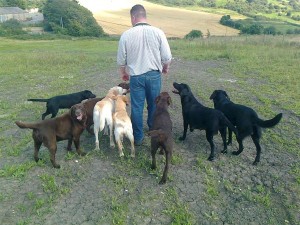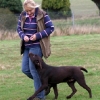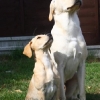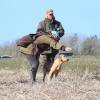Canine Communication…..
(Or ‘speaking fluent dog’)
Genuinely, if you asked 100 people ‘do dogs communicate with one another?’, I would strongly imagine, 100 people would answer ‘yes! Of course!’. And they DO…. but the problem that is so regularly seen, especially out on dog walks, at training classes and in any situation where canines not well known to one another meet, is that you frequently see that they DO communicate, but quite often only one of them speaks fluent ‘dog’.
The problem with a DOG, not speaking fluent ‘DOG’ is that huge misunderstandings happen. Body language is misused and misread. One party may be giving ‘leave me alone’ signals but the non fluent canine simply ignores these or genuinely doesn’t understand them, and so what the fluent dog considers ‘a polite attempt to defect unwanted attention’ gets pushed aside.
The most common senario is the basically oversocial dog who does, genuinely, mean no real harm, but believes that because he was socialised with friendly, happy to play, happy to respond dogs all through his sensitive first couple of months, this has blueprinted the idea that all dogs do. *Then* what happens is, the dog, usually relatively young, but sometimes older but stuck in a repeating pattern of approaching dogs believing them to always want his attention, he sees the ‘fluent dog’ rebuffing him, and feels that he needs to try HARDER to make them respond as he wishes which results in the dog that WAS trying to redirect him with subtle signs, NOW feels that he/she has to give a much stronger warning. This will depend on their individual personality, it may be that they blank completely and pretend the other dog doesn’t exist (A CLASSIC example of this is the dog or bitch who just stands there looking miserable and blank whilst another dog humps and humps him until a HUMAN removes it. The dog genuinely believes by ignoring this misguided, rude and antisocial canine, the dog will eventually take the hint. But they rarely do).
Another response, especially if the dog is of a stronger personality is to verbally tell the dog to leave it alone, possibly coupled by shoulder barging. The problem here is often the ‘non fluent’ dog sees any kind of physical contact as instigation to play, and can then try and return the contact, which of course, to a ‘fluent’ dog is him challenging him. This rarely ends well.
The huge problem we have in social dog society, is that there are few dogs so comfortable in their own skins, so fluent in ‘canine’ AND so free of prejudices given to them by humans (such as being kept on the lead because they have a poor recall, being dragged away from any dog that the owner has judged as being a potential problem, being fed ‘nervous vibes’ down the lead or from nervous chatter or instantly shouting ‘Come Fido! COME!!!!!’ in a panic stricken voice every time a dog comes into view because of previous ‘bad experiences’ etc etc…) that we end up with dogs of all ends of the ‘fluency spectrum’ meeting and having to basically, even briefly, ‘muck in together’.
Now lets move sideways and look at how feral dogs behave for the majority of their time. They move around with other canines in what you might call ‘companionable silence’. Very little interaction. A strange dog may need to pass the pack, and he will do so, not making eye contact and usually giving off physcial gestures that he means no harm and is just going about his business. There are no ‘adolescent like displays of over affection except from young puppies’ little in the way of unwanted attention given, and if a dog requires solitude, it is given space. It will communicate that it does purely by taking itself away, and if a dog comes too close when space is wanted, the dog will just tense its body, freeze its tail, make its body completely still momentarily, and the other dog will pick up on that immediately, will turn away, and the solitary dog will relax and lay back down. Proper canine behaviour is subtle. Fluent communication is fairly short and sweet, dogs gaining all the information they need from one another quickly and with a minimum of fuss. Passing on quickly unless there is a distinct need to continue the contact. This can be done at quite considerable distances too, they do not have to be on top of one another to do it, so sometimes you may believe that the dogs have not noticed one another. They have. They just ‘get it’ and feel no need to come closer.
So, reading the above, you may understand why, a lack of canine communication skills, to a dog ‘fluent’ (which don’t read as ‘antisocial’, simply skilled in its natural language) can create situations which are a catalogue of misunderstanding and complete disaster.
LUCKILY, the ‘fluent dog’ will generally, unless pushed to the limit of its patience, use what god gave it as a response to most negative situations, it will simply look away or walk away. Its not about submitting, its about grasping that trying to communicate with such a dog is just not working, so they will remove themselves. Dogs in general are peaceful creatures. Fighting can result in injury, and why would you disable yourself and therefore make yourself vunerable? So they do all they can to AVOID confrontation as opposed to incite it. A good grasp of a dog who just doesn’t speak canine, is one patently TRYING to initiate situations that could result in aggression being the only answer. One ‘coming forward’ when another dog walks away or gestures its not interested in communicating any further.
As mentioned in other articles, nothing about ‘dominant behaviour’ is *bolshy*. That is saved for the middle ranking dogs to have small spats amongst themselves over items or situations they deem important. Some ‘spats’ are just playing. Pretending. Dress rehersing in safe company for if, one day, they actually NEED to use and identify threatening body language and respond to it.
So how does a dog learn to speak ‘canine’? Influences in the environment whilst in the litter can certainly *help*. Not being completely seperated from Mum too early so she can respond as a ‘real dog’ will to the whelp contributes. Not being taken from its litter mates too early helps give *some* understanding too. Living with other dogs can play its part. But sometimes my own experience has been that living with only one or two dogs, can create the opposite effect. The dog speaks fluent ‘his tiny pack’ and everyone else is expected to act and respond just as his one role model does. Now should THAT dog speak flent canine, great. But if HE doesn’t, he is a negative role model in that sense and will actually stunt the dogs potential understanding. If he is too much of a pushover, allowing rude unnecessary behaviour from the dog with no ‘curbing’ of it from time to time in the strongest terms, he can help create a monster who believes the same behaviour is *normal* outside the home.
If humans interfere too much, a dog learns to speak fluent *human* and very little *dog*. However the conundrum being you cannot FORCE a dog to be someone it is not, and you cannot allow a youngster to learn that continuous rude and overzealous behaviour is acceptable, so if the dog is not stepping in, indeed the human has to.
I think on a deeper level, very few homes have the room or want to build up great packs of dogs, so therefore learning will need to take place on walks, in social situations, at classes and so on. One of the classic negatives is never allowing the dog to meet dogs that may have a somewhat reputation for being short fused and grumpy. They never experience being told ‘STOP! thats enough! or there will be a negative consequence’…. the owner tending, naturally enough to choose only easy going, canine pushovers for their youngster to mix with. Five minutes with a grumpy ‘leave me alone’ dog is worth five HOURS of gambolling about in a carefree manner with a number of sociable individuals.
Not speaking canine can often be about just not listening. The adrenaline rushing so hard and fast and the desire so strong to ignite attention from another dog that it overides possible common sense and even a limited personal understanding of canine communication. This is a mixed problem of lack of canine interaction opportunity, OR, again, only canine company that shares a similar ‘social butterfly’ view of the world. It can be half or all its genes from a dog with a poor temperament. But often these dogs are MADE not born…
Not speaking fluent canine causes almost all the problems we see in domestic dog society. It leads to fights, behaviour building from being overSOCIAL to begin with, heading to real aggression having had a number of negative experiences, if, of quite a naturally reactive personality with a low ‘bounce rate’. A dog that cannot READ another dog, even when that dog is displaying signs that are EVEN clear to us slow witted and narrow minded humans, is a very sad sight. It makes me think of a lonely soul, because even his own type don’t really have the ability to communicate with him (or her!) What he DOES have going for him, is as long as this is not showing itself in actual AGGRESSION, and remains as overzealousness and oversocialbility, he certainly will have a LOT of ‘half lingual’ kith and kin out there in the modern dog world!
Diana Stevens – May 2014








